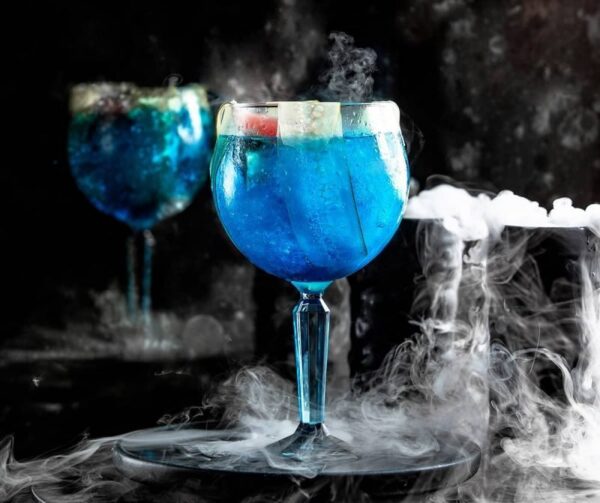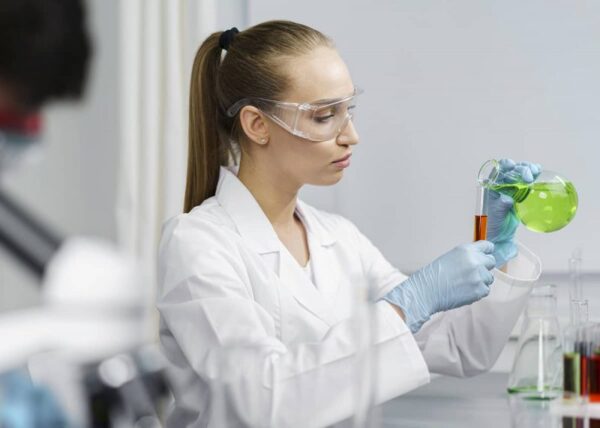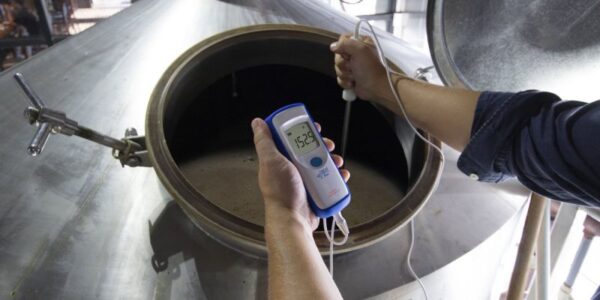There is an increasing number of small craft gin producers that have appeared in the last few years in the world. They offer unusual alternative gins compared to big brands. The most famous Croatian craft gin is Old Pilots´s gin, which in 2019. named the best in the world in the London dry gin category. If you wanna see how they made it with Hanna’s help, go on their web page: Old Pilots

According to EU regulations, there are three types of gin.
Gin is a strong alcoholic drink flavored with pine obtained by flavoring sensory-appropriate ethyl alcohol of agricultural origin with pine berries (Juniperus communis L.).
The alcoholic strength of gin shall be at least 37.5% vol. Only natural and / or naturally identical aromatic substances may be used in the production of gin.
Distilled gin is a strong alcoholic drink flavored with pine obtained exclusively by redistillation of sensory-suitable ethyl alcohol of agricultural origin of appropriate quality with an initial alcoholic strength of at least 96% vol., in boilers traditionally used for gin, in the presence of juniper (Juniperus communis L.) natural herbs provided that the taste of pine prevails.
The alcoholic strength of distilled gin shall be at least 37.5% vol.
London gin is a type of distilled gin: obtained exclusively from ethyl alcohol of agricultural origin with a maximum methanol content of 5 grams per hectolitre converted to 100% vol. alcohol, is flavored exclusively during the redistillation of ethyl alcohol in traditional boilers in the presence of all natural plant substances used.
The alcoholic strength of London gin is at least 37.5% vol.

Gin production
Gin is produced by flavoring ethyl alcohol of agricultural origin with appropriate aromatic herbs. The main ingredients are high-quality neutral alcohol, aromatic plants such as pine, coriander and angelica, and distilled water. Traditional production of gin is obtained through several stages, namely the production of ethyl alcohol from cereals, redistillation of alcohol with the addition of pine and other aromatic plants and dilution with water to the desired alcohol content.

Producers use cereals such as barley, corn, rye and wheat to produce a neutral alcohol that serves as a base for obtaining gin. Since cereals are a raw material that contains starch, the first phase is the preparation of barley malt as a source of amylolytic enzymes that are needed for the sugaring process. Barley malt is prepared by pouring warm water of 20°C over the barley in a tank and leaving it to germinate. The sprouted grains are then ground using a mill into malt.
After preparing the barley malt, it is necessary to grind wheat, barley, rye grains and mix the obtained semolina with water and heat. During heating, a clustering process occurs during which the starch is partially sweetened by the enzymes present. Further sweetening is carried out by heating the mixture to 56 °C and adding 15% dry barley malt containing amylolytic and proteolytic enzymes. After completion of the sweetening, the mixture is cooled to a temperature suitable for alcoholic fermentation and inoculated with pre-grown yeast.
thermometer for brewing HI935012
HI935012 is a waterproof portable thermistor thermometer designed for brewing industry. The HI935012 is supplied with the FC762N2 stainless steel probe that is 1 meter in length and is used to measure the temperature of mash in the center of a tank. This meter can be used at other critical points of the brewing process including the wort boil and fermentation.
- CAL Check to ensure internal electronics are within acceptable tolerances
- Probe Error Messages
- High accuracy ±0.1°C/±0.2°F

By inoculating the yeast, the fermentation process begins, which takes place at a temperature of 25 °C to 35°C and a pH value of 4 to 5. The process ends when the yeast converts all the sucrose from the pomace into alcohol, that is, until the yeast is inhibited by alcohol. When inhibition occurs, the coma contains approximately 7-9% by volume of alcohol depending on the characteristics of the yeast. After the fermentation of the pomace is completed, the distillation process begins.
For measuring pH level during the fermentation Halo® Bluetooth® Wireless pH Meter – FC2142
Easily measure pH in mash, wort, beer or spirits with the FC2142 Wireless pH Meter. This HALO is designed for home and craft beer or spirit makers.
The built-in electrode features a titanium body, flat glass tip, and renewable cloth junction making it ideal for measuring the pH of mash or wort during the beer making process. All readings are transmitted directly to your Apple or Android device or the edge®blu. Easily connect to the Hanna Lab App at the press of a button via Bluetooth wireless technology.
In addition to ethanol, fermented pomace contains compounds that are formed as by-products of alcoholic fermentation such as glycerol, higher alcohols, acetaldehyde, ethyl acetate, acetic acid, etc., and various impurities of organic and inorganic origin from cereals.
This compounds can affect the quality and taste of your gin. To measure them and make sure that your gin is top quality gin, measure them with Hanna’s ultimate beam of light.
iris Visible Spectrophotometer – HI801 is a sleek and intuitive spectrophotometer that allows for measurement of all wavelengths of visible light.
Customize your methods, take a wide range of measurements, and feel confident in your testing accuracy with iris.
- iris features precise wavelength selection between 340 nm to 900 nm for complete method compliance and accuracy that is necessary in industries like professional laboratories, water treatment facilities, wineries, and more.
- Results are consistent and accurate regardless of throughput with the high quality and uniquely designed optics system.
- Customization options include multiple cuvette shapes and sizes, custom calibration curves, and methods.
Redistillation of ethyl alcohol with the addition of aromatic herbs
For the production of gin, it is sufficient to flavor ethyl alcohol of agricultural origin with pine berries. However, for distilled gin and London gin, ethyl alcohol needs to be redistilled in traditional cauldrons in the presence of pine berries and other aromatic plants. The main feature, by which the brands of giants differ, are strictly preserved recipes of mixtures of plants. Many plants are a classic addition to most giants and in addition to pine and coriander, more and more distilleries are experimenting and introducing some new unique herbs, spices, flowers and fruits to create a gin of unique flavor.
There are two main distillation methods for extracting aromas from plants: the method of maceration and boiling of plants and the method of steam infusion.
The redistillation process begins by filling the boiler with water and alcohol so that the strength of the alcohol is about 45% by volume of alcohol.
After 48 hours of maceration, the boiler closes and begins heating through the steam coils or steam jacket at the bottom of the boiler at a temperature of 70°C to 80°C. At this temperature, the essential oils evaporate together with the alcohol.
Distillation ends when the alcoholic strength of the distillate drops to 40% by volume of alcohol, and then less volatile plant compounds begin to dominate the distillate.
With the advent of craft distilleries, the range of plants used to flavor gin has increased, thus gaining a new dimension of flavor. Due to the different types of plants used and their ratios, the types of gin vary greatly. In order to be able to classify the gin, ie to determine which species it belongs to, it is necessary to perform its chemical and sensory analyzes. Hanna Instruments can be your comapnion in your journey with gin.







